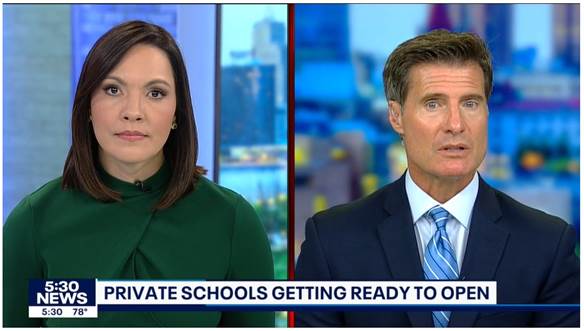The Minnesota Department of Education just released the statewide graduation rate for 2023, a rate that is “moving in the wrong direction” according to MPR News.
“Before the pandemic, Minnesota’s class of 2020 had a record high graduation rate of 83.8 percent,” MPR explains. “That rate has since fluctuated, falling in 2021 by half a percentage point to 83.3, inching back up in 2022 and falling last year back to where it was in 2021.”
It’s no surprise that the pandemic gets its jab of blame; indeed, we’re only beginning to see just a few of the long-term effects of the COVID-19 school closures that teachers’ unions insisted upon … and we will likely see more in the future.
What should surprise us more, however, is how steady graduation rates have actually remained over the years. In fact, when we look at the proficiency scores that underlie these graduation rates, we should be asking ourselves just why Minnesota’s graduation rates are so high!
Consider the chart below, which shows the newly released 2023 graduation rate (blue) for students from a variety of racial demographics. At 89%, white students have the highest grad rate, while American Indian students have the lowest at 61%.
Minnesota high school students are tested for the last time in reading when they are in 10th grade, and the last time for math when they are in 11th grade. Thus, if we want to see how the 2023 graduates performed on these tests, we must go back to look at the 2021 reading proficiency scores and the 2022 math scores. Those numbers are seen in the chart below.

The red bar shows that about 20-30% more students graduated than were proficient in reading. The green bar shows that roughly 40-55% more students graduated than were proficient in math.
Looking at these numbers, Minnesotans shouldn’t be so disturbed that the statewide graduation rate has dropped a little bit in the last year; instead, they should be alarmed that we are graduating so many unprepared students.
If you’re like most people, you automatically assume that a graduate has been able to pass tests and meet standards for math and reading. But apparently, if we made reading proficiency the criteria for graduation, only 58% of Minnesota students would have graduated in 2023. Conversely, only 37% would have graduated if math proficiency was the criteria.
Not only does this give Minnesotans a false impression of how the public schools are training their students, it also gives students a decided disadvantage as they enter adulthood. How many of those 2023 graduates went to college last fall thinking they were prepared for higher education, only to end up in remedial classes? How many of those 2023 graduates entered a trade, only to find that they couldn’t cut and measure wood or read instructions on how to install a heating and cooling system?
Yes, graduation scores have slipped a bit in the last year. But that slippage buries the real story: Minnesota’s high school graduates are not academically prepared.
It’s time to get serious about the crisis in education. How long will it take to remedy the failures of the system? If it was your child, would you want to wait?
We need a relief valve for the crisis. Parents and students need Education Savings Accounts that give them the freedom and resources to pick a school that gets the job done.
—
Image Credit: Pexels













